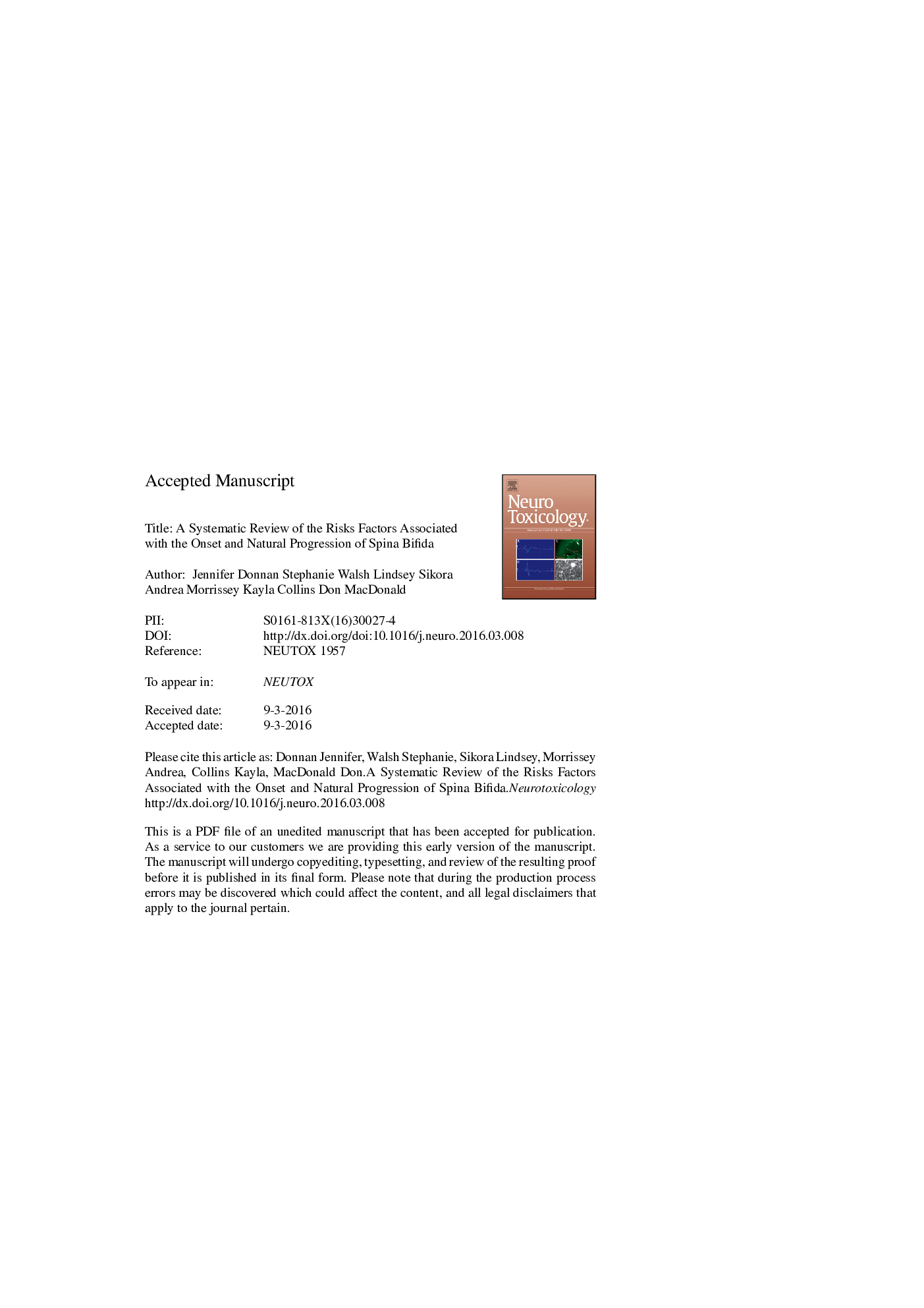| Article ID | Journal | Published Year | Pages | File Type |
|---|---|---|---|---|
| 5560902 | NeuroToxicology | 2017 | 35 Pages |
Abstract
The purpose of this study was to systematically assess and synthesize the world literature on risk factors for the onset and natural progression of spina bifida, thereby providing a basis for policy makers to identify appropriate risk management measures to mitigate the burden of disease in Canada. Searches of several health literature databases from inception to February 2013 were conducted by a health sciences librarian. A total of three meta-analyses that studied a risk factor for the onset of spina bifida were included. Pooled results showed that paternal exposure to Agent Orange (RRÂ =Â 2.02; 95% CI 1.48-2.74) and maternal obesity prior to pregnancy (ORÂ =Â 2.24; 95% CI 1.86-2.74) each increased the risk of having a child with spina bifida. Paternal exposure to organic solvents was also close to the limit of significance (ORÂ =Â 1.59; 95% CI 0.99-2.56). A total of 63 observational studies, encompassing hundreds of potential risk factors, were included for risk factors for the onset of disease. One meta-analysis and four observational studies examined the impact of genetic risk factors. Only specified mutations in the 5,10-methylenetetrahydrofolate reductase (MTHFR) and dihydrofolate reductase (DHFR) genes were found to be linked to disease onset. One observational study evaluated a risk factor for the natural progression of disease. An extensive number of potential risk factors for the onset of spina bifida have been studied, though most lack sufficient evidence to confirm an association. Currently, strong evidence exists to suggest a causal association for maternal obesity prior to pregnancy, and paternal exposure to Agent Orange.
Related Topics
Life Sciences
Environmental Science
Health, Toxicology and Mutagenesis
Authors
Jennifer Donnan, Stephanie Walsh, Lindsey Sikora, Andrea Morrissey, Kayla Collins, Don MacDonald,
